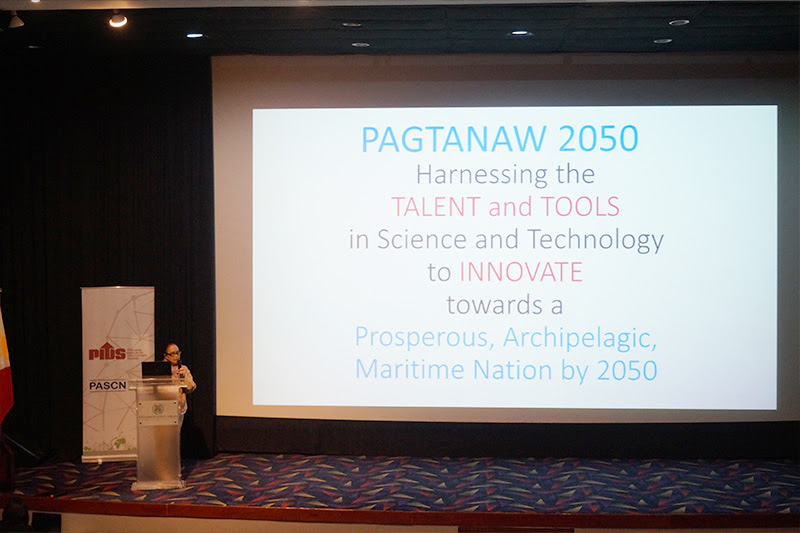The Philippines, with nearly 80% of its territory comprising marine waters, is uniquely positioned to capitalize on its maritime resources while pursuing sustainable economic growth through the blue economy.
This perspective was shared by Dr. Rhodora Azanza, former President of the National Academy of Science and Technology, and Dr. Maria Christina Paler, Assistant Professor at the University of San Carlos (USC) Department of Biology. Both experts emphasized the Philippines’ strategic advantage as a maritime nation and the importance of balancing resource utilization with sustainability during the symposium on “Shaping APEC’s Blue Economy Agenda: Philippine Leadership and Visayas-Centric Innovations,” organized by the Philippine APEC Study Center Network (PASCN) of the Philippine Institute for Development Studies (PIDS) in collaboration with USC.
“The Philippines is more water than land. We are nearly 75% to 80% marine, with less than 30% land,” Azanza pointed out. “Most Filipinos live in coastal areas, especially in the Visayas, and we need to tap into this potential for the benefit of both our communities and the nation,” she added.
Dr. Azanza also highlighted several key sectors, including tourism, renewable energy, ports, and pharmaceuticals, where the Philippines can take a leadership role. She emphasized the importance of interdisciplinary approaches and legislative efforts, such as the Philippine Ecosystem and Natural Capital Accounting System (PENCAS), which are crucial for addressing challenges in the blue economy.
One of the most promising opportunities for the country is coastal and marine tourism, particularly in the Visayas region. Azanza noted that in 2019, biodiversity tourism contributed an estimated 12.7% to the country’s GDP. Coastal tourism not only drives revenue but also provides livelihoods for local communities while promoting environmental awareness and conservation.
Port development is another critical area for economic growth. Improving port infrastructure can enhance trade and connectivity, enabling smoother movement of goods and services both within the Philippines and internationally. Strategic investments in this sector could help position the Philippines as a key maritime commerce hub in the Asia-Pacific region.
Furthermore, the country’s extensive coastal and marine areas present ideal opportunities for renewable energy generation, a sector that can contribute to climate change mitigation and stimulate new industries and job creation. Azanza referred to a 2020 Department of Energy estimate, which identified 15 potential sites for generating an estimated 265 megawatts of electricity. With the support of scientists and engineers, this potential could be realized in the near future.
Dr. Paler added that while the Philippines is well-positioned to benefit from its marine resources, challenges remain in ensuring sustainability. She stressed the importance of marine fishing as a cornerstone of the blue economy, particularly for food security and employment. “Marine fishing plays a vital role in providing much of the animal protein consumed globally. In the Philippines, it is integral to food and employment security,” she explained.
Both experts agreed that preserving marine ecosystems is fundamental to the success of the blue economy. Protecting these ecosystems ensures the long-term sustainability of industries like fisheries and tourism while maintaining ecological balance. They concluded that for the Philippines to thrive as a prosperous maritime nation, it must leverage science and technology to drive innovation and sustainability in its blue economy.




